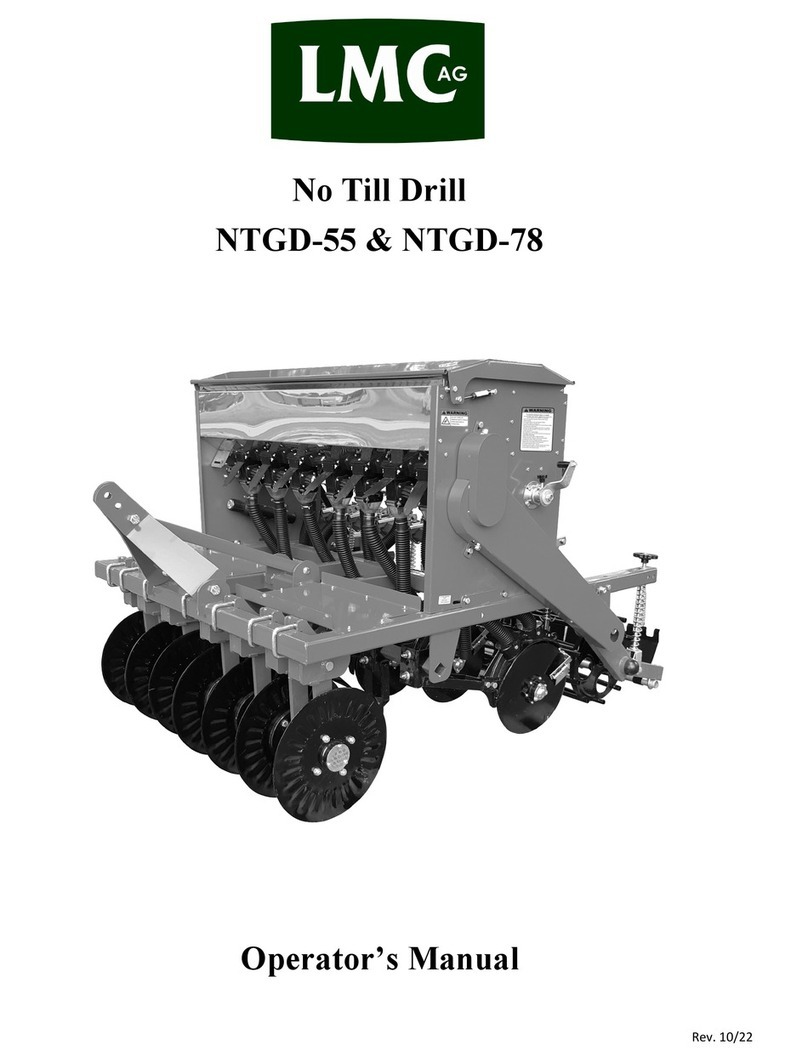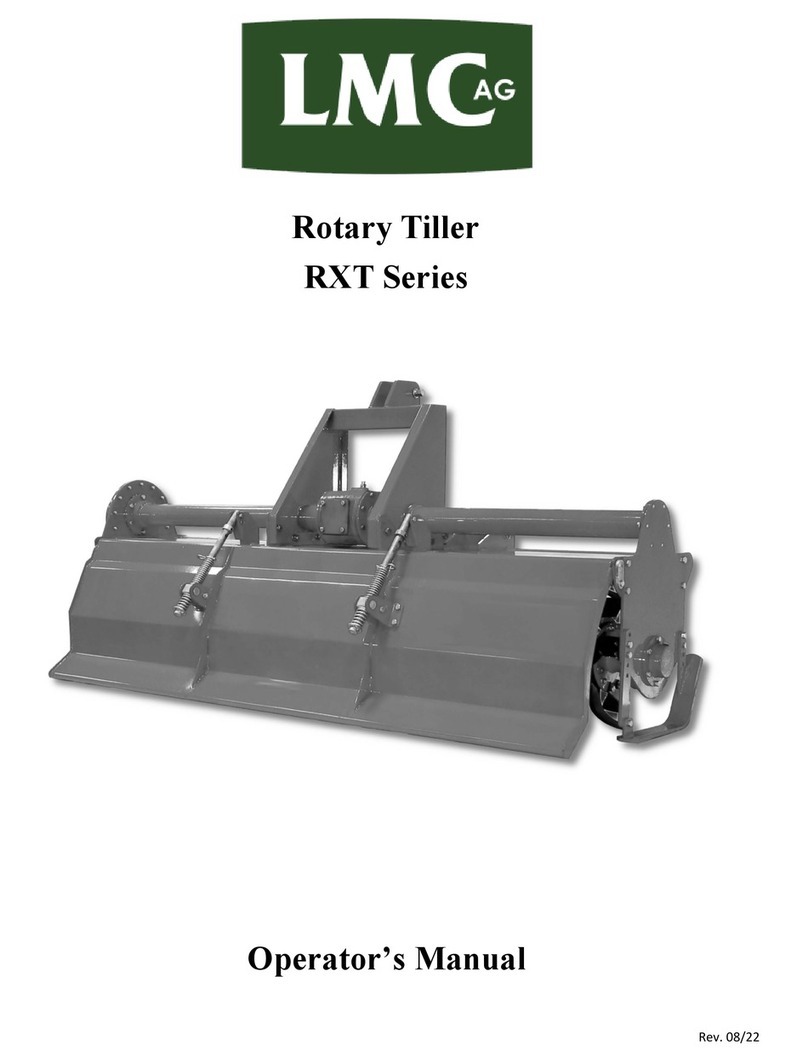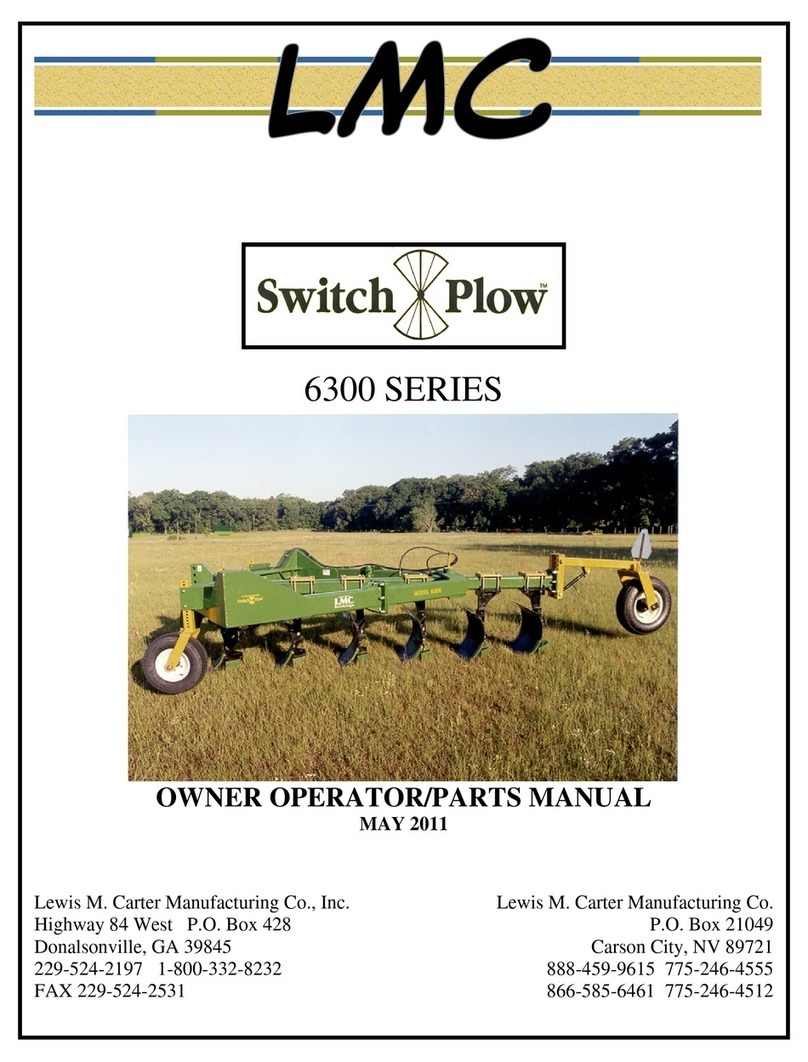10
• Adopt safe driving practices.
• Keep the brake pedals latched together at all times. Never use independent braking with machine in tow
as loss of control and/or upset of unit can result.
• Always drive at a safe speed relative to local conditions and ensure that your speed is low enough for an
emergency stop to be safe and secure. Keep speed at a minimum.
• Reduce speed prior to turns to avoid the risk of overturning.
• Avoid sudden uphill turns on steep slopes.
• Always keep the tractor or towing vehicle in gear to provide engine braking when going downhill. Do not
coast.
• Do not drink and drive!
• Comply with state and local laws governing highway safety and movement of farm machinery on public
roads.
• Use approved accessory lighting flags and necessary warning devices to protect operators of other vehicles
on the highway during daylight and nighttime transport. Various safety lights and devices are available
from your dealer.
• The use of flashing amber lights is acceptable in most localities. However, some localities prohibit their
use. Local laws should be checked for all highway and marking requirements.
• When driving the tractor and equipment on the road or highway under 40 kph (20 mph) at night or during
the day, use the amber warning lights and a slow moving vehicle (SMV) identification emblem.
• Plan your route to avoid heavy traffic.
• Be a safe and courteous driver. Always yield to oncoming traffic in all situations, including narrow
bridges, intersections, etc.
• Be observant of bridge loading ratings. Do not cross bridges rated at lower than the gross weight at which
you are operating.
• Watch for obstructions overhead and to the side while transporting.
• Always operate in a position to provide maximum visibility at all times. Make allowances for increased
length and weight of the equipment when making turns, stopping the unit, etc.
• Pick the most level route when transporting across fields. Avoid the edges of ditches or gullies and steep
hillsides.
• Be extra careful when working in inclines.
Highway and Transport Operations
Important Safety Information






























